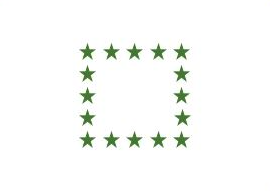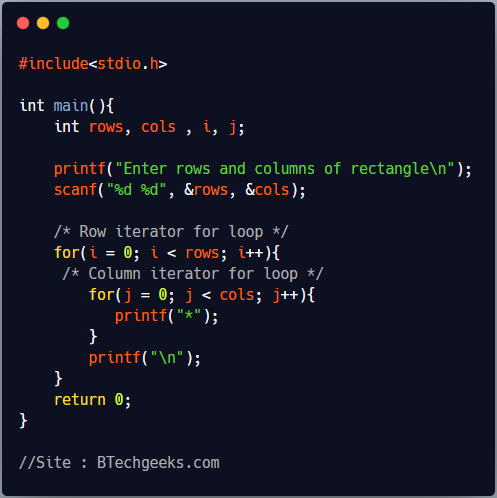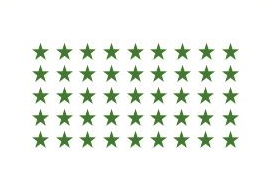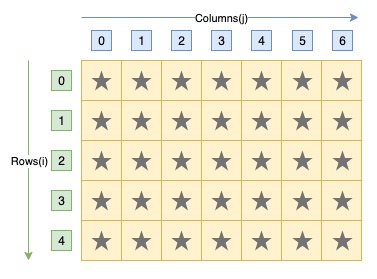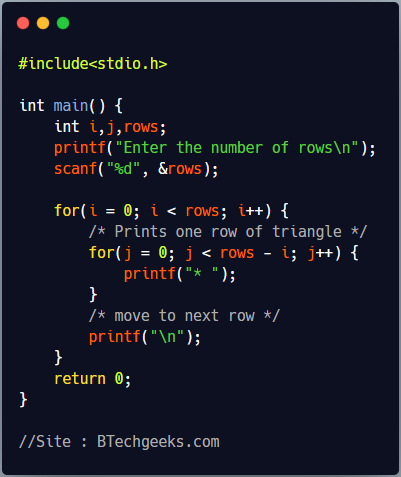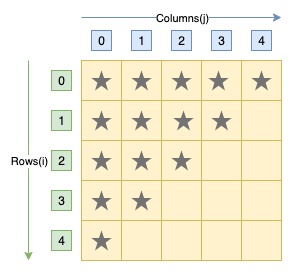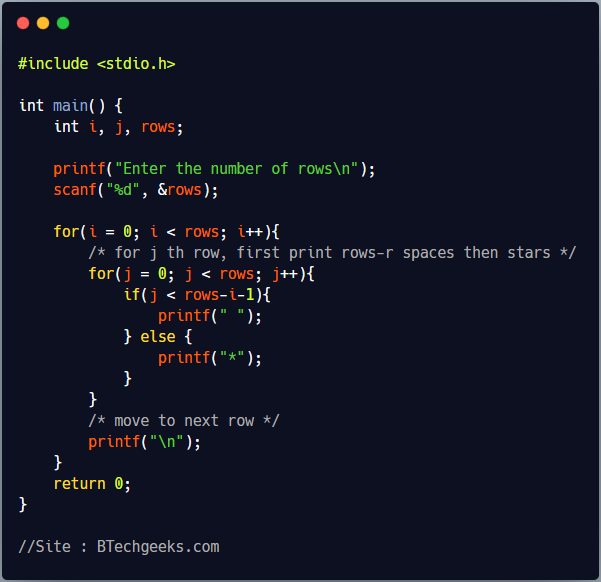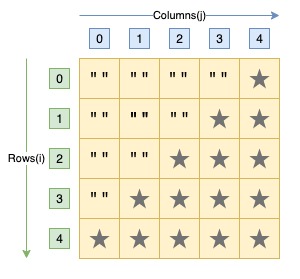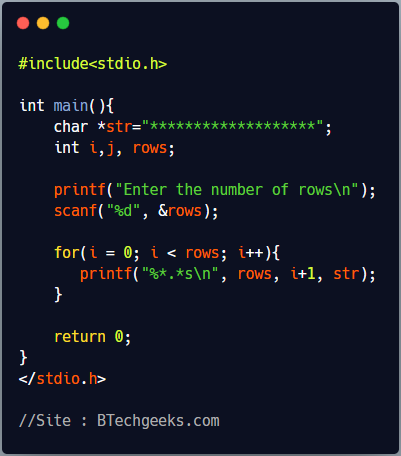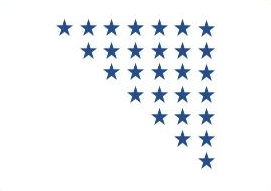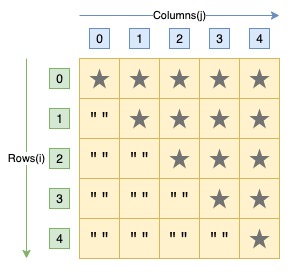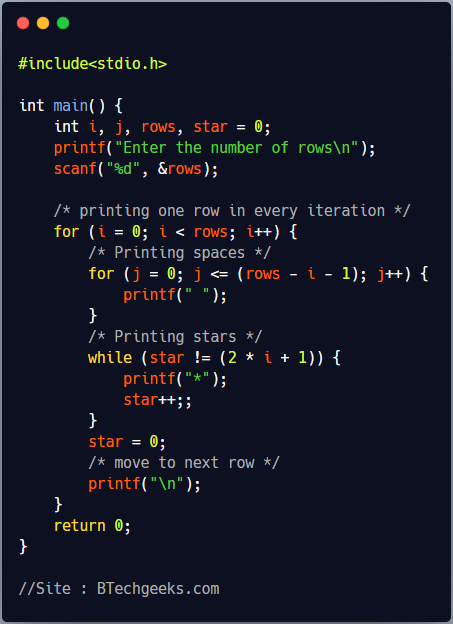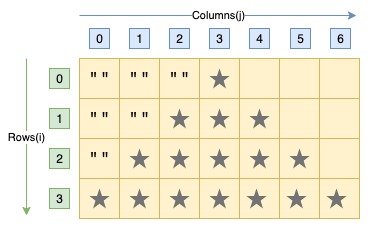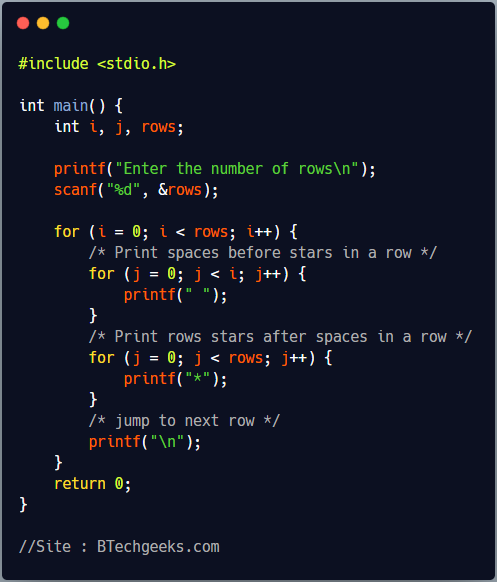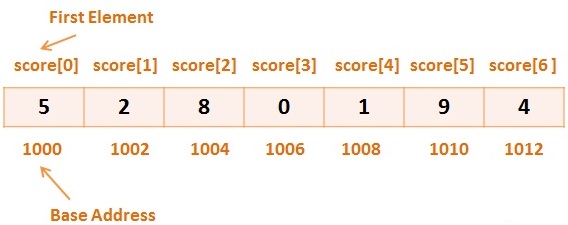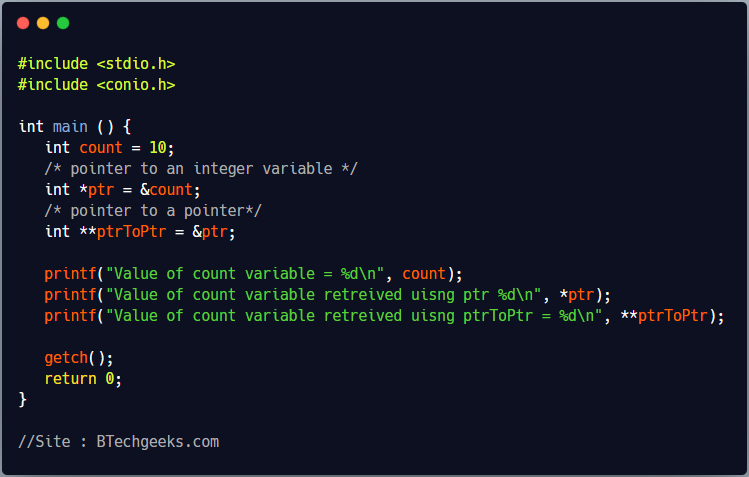- In this tutorial, we will learn about various storage classes in C like static, auto, register and extern. We will also study the effect of storage classes on storage and visibility of variables.
A Storage class defines the scope, life-time and where to store a variable in C program. There are four storage classes defined in C programming language
- static
- auto
- register
- extern
Static Variable
A local static variable is visible only inside their own function but unlike local variables, they retain their values between function calls. We can declare static variable by adding static keyword before data type in variable declaration statement.
static data_type variable_name;
For Example:
static int sum;
- Static keyword has different effect on local and global variables.
- For local static variables, compiler allocates a permanent storage in heap like global variable, so that they can retain their values between function calls. Unlike global variables, local static variables are visible only within their function of declaration.
- For global static variables, compiler creates a global variable which is only visible within the file of declaration.
- Variables declared static are initialized to zero(or for pointers, NULL) by default.
In the following program, we declared a local and a static variable inside getVal function. Output of this programs shows that static variable retains it’s value between successive function call whereas local variable vanishes when control exits function block.

#include <stdio.h>
int printVal(){
/* Declaring a static variable */
static int staticVariable = 0;
/* Declaring a local variable */
int localVariable = 0;
/*Incrementing both variables */
staticVariable++;
localVariable++;
printf("StaticVariable = %d, LocalVariable = %d\n", staticVariable, localVariable);
}
int main(){
printVal();
printVal();
printVal();
printVal();
return 0;
}
Output
StaticVariable = 1, LocalVariable = 1
StaticVariable = 2, LocalVariable = 1
StaticVariable = 3, LocalVariable = 1
StaticVariable = 4, LocalVariable = 1
Automatic variable
A variable which is declared inside a function or block is automatic variable by default. We can declare automatic variables using auto keyword, but it is rarely used because by default every variable is automatic variable.
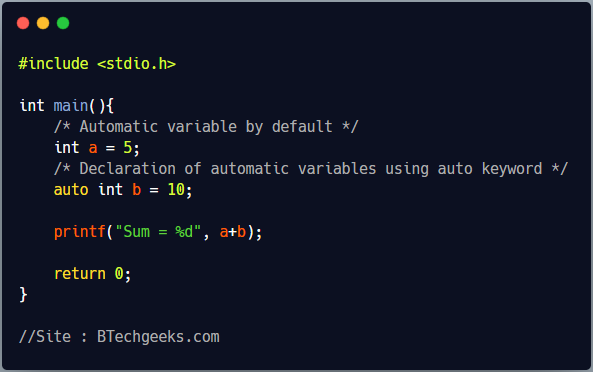
#include <stdio.h>
int main(){
/* Automatic variable by default */
int a = 5;
/* Declaration of automatic variables using auto keyword */
auto int b = 10;
printf("Sum = %d", a+b);
return 0;
}
Output
Sum = 15
Register Variable
Declaring a variable with register keyword is a hint to the compiler to store this variable in a register of the computer’s CPU instead of storing it in memory. Storing any variable in CPU register, will reduce the time of performing any operation on register variable. We can declare register variables using register keyword.
- The scope of register variables are same as automatic variables, visible only within their function.
- You a only declare local variables and formal parameters of a function as register variables, global register variables are not allowed.
- Declaring a variable as register is a request to the compiler to store this variable in CPU register, compiler may or may not store this variable in CPU register(there is no guarantee).
- Frequently accessed variables like loop counters are good candidates for register variable.
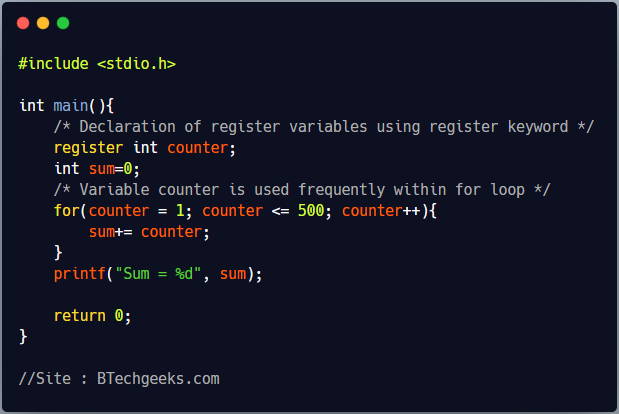
#include <stdio.h>
int main(){
/* Declaration of register variables using register keyword */
register int counter;
int sum=0;
/* Variable counter is used frequently within for loop */
for(counter = 1; counter <= 500; counter++){
sum+= counter;
}
printf("Sum = %d", sum);
return 0;
}
Output
Sum = 125250
External Variable
External variables in C are variables which can be used across multiple files. We you can declare an external variable by preceding a variable name with extern specifier. The extern specifier only tells the compiler about the name and data type of variable without allocating any storage for it. However, if you initialize that variable, then it also allocates storage for the extern variable.
- Variables declared extern are initialized to zero by default.
- The scope of the extern variable is global.
- The value of the external variable exists till program termination.
